Disclosure: This week’s blog is specifically written in order to share details, costs and the relevant processes of shipping a personally owned vehicle ( “POV” in shipping slang ) from another country to Australia.. I’ve thus split this blog into two parts: PART ONE – of general interest to readers who might wonder why we chose the shipping option ( versus others ), and PART TWO – which contains a great deal of detail and specific information ONLY relevant (and of any possible interest) to others who are contemplating bringing their own vehicle in. It will not be of ANY interest to you if you are not considering doing this yourself ( in which case you should pay close attention !) unless, perhaps, you have a particular curiosity about such an endeavor ( and few will ! ).
We relied very heavily on the shared experiences of others who went before us so this is simply a little “paying it forward” with more current information. I know a number of prospective overlanding “shippers” were looking for specific details of our experience, so, in lieu of our regular weekly ( “what we’re doing, where we’ve been” ) blog, here it is ( I’ll return to the regular stuff next week ! ).The extraordinary and unprecedented delays we ( and many others ) have faced in getting our cargo unloaded at the Port of Melbourne through January and February (that’s in 2023, in case you’ve not previously followed our regular blog ) would indeed make the casual reader question why someone would ever take on this somewhat daunting, incredibly time consuming and of course, rather expensive endeavour. The short answer is that if you travel long enough in Australia it actually does make sense, and such extraordinarily long shipping delays are usually very rare – obviously no one plans on encountering them. But, when you are caught up in them, like we were, there is simply nothing you can do but make the best of the situation ( difficult though that was at times !). This was our story.
PART ONE: Our Recent Experience
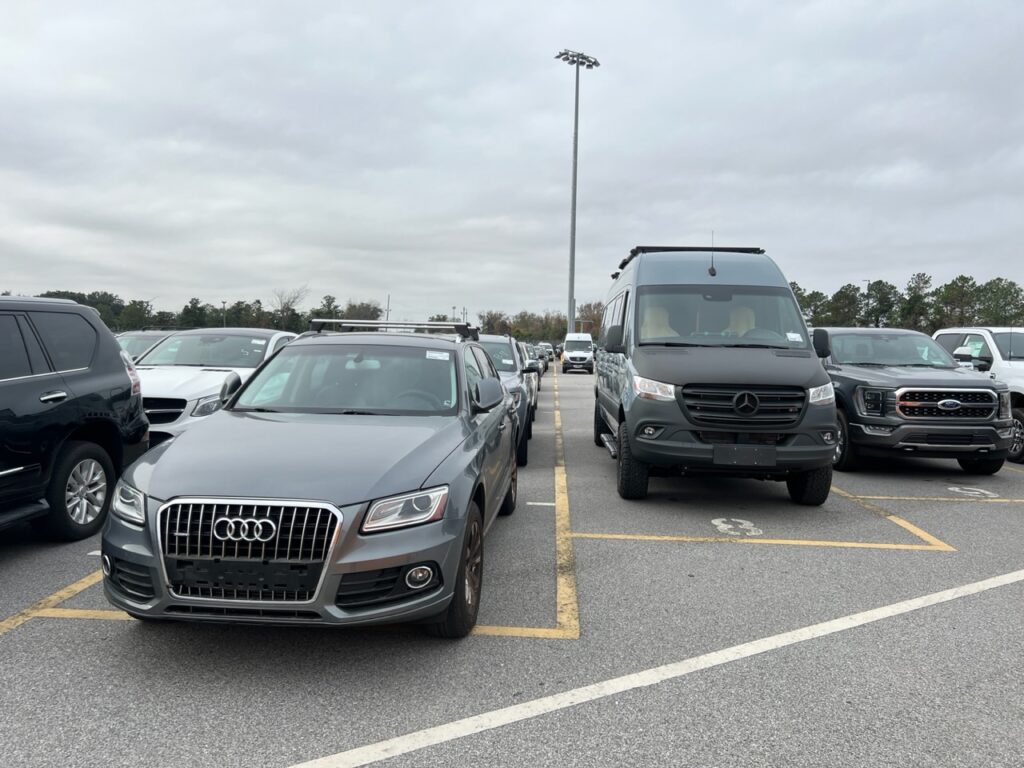

It’s certainly fair to say that this whole port delay experience ( finally resolved on March 10 after a week of extraordinary stress ) put rather a damper ( temporarily anyway ) on our grand Aussie adventure. The fact that there was significant theft from our vehicle did not help. Obviously one takes with them ( on a plane ) anything and everything one can but weight restrictions mean you are practically limited in that regard. A lot of stuff stays with your vehicle and there was theft from the parts of the van that we simply could not secure. It’s an inherent risk on any RoRo ship since the vehicle is unlocked during the whole passage ( port drivers need to be able to drive it on and off ). We are insured but the deductible is fairly hefty and there are exclusions. We’ll be happy if we recover just most of what was lost. Undoubtedly some of our readers must be thinking, “Jeff, Lois – was it really worth it ?”. Timely then, perhaps, that I address a couple of questions we ALWAYS get asked when discussion comes around to why we shipped our vehicle from North America to Australia.
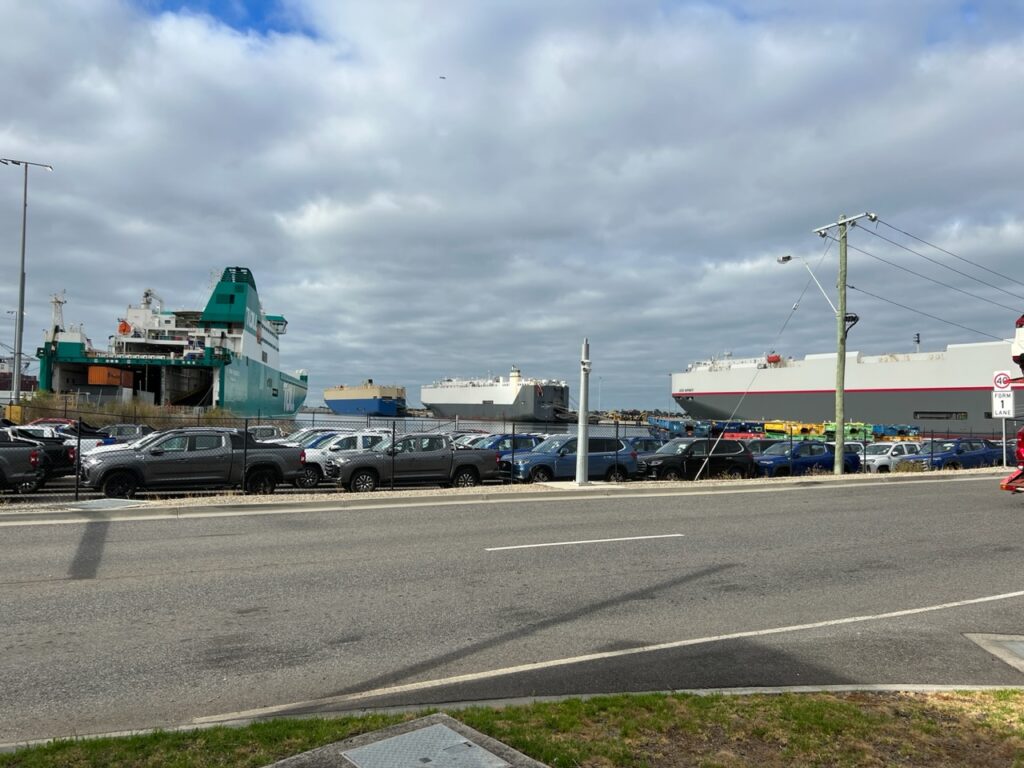
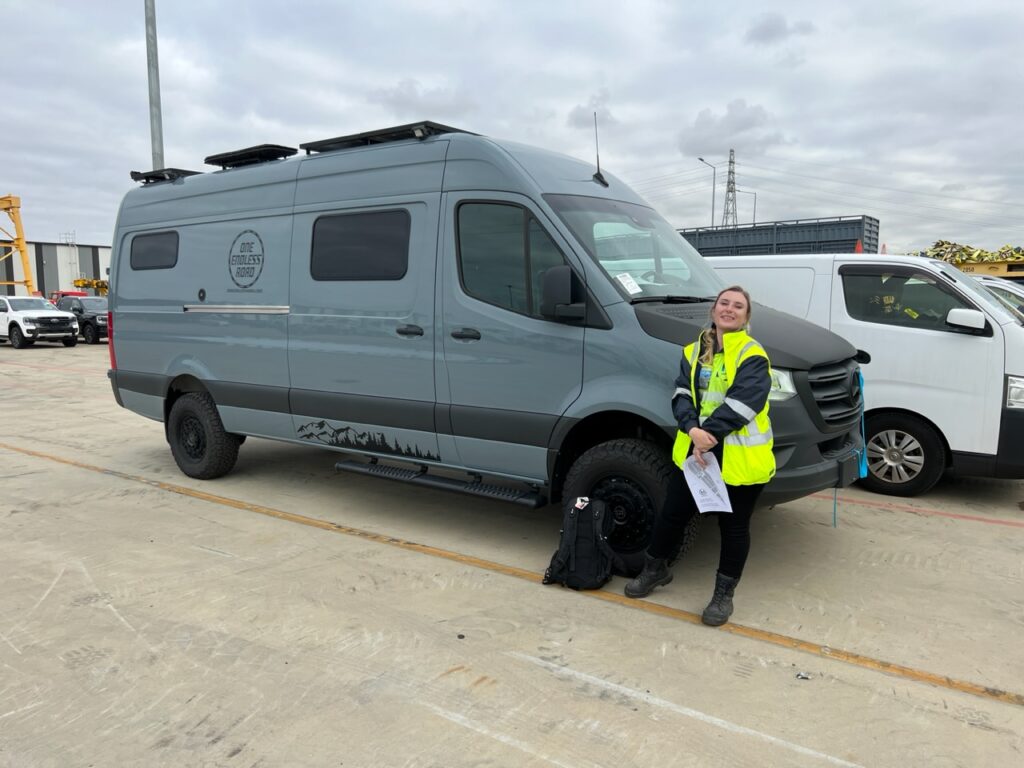
Other Options
The first question asked ( almost always ) is “Isn’t it expensive?”. Yes, it is. And travelling in a rather large van makes it more so ( an SUV with a rooftop tent – a very common overlanding choice – would cost much less ). Shipping RoRo it’s all about CBM ( cubic metres ) – the higher, longer, and wider your rig is the more you pay. It’s different than a container – if your rig fits in one of those ( our van does not, but our old truck camper did ) the cost is the same no matter how much you can stuff in it. Regardless, the absolute cost is essentially irrelevant- the relevant question is how does the shipping cost compare to the two other options for someone outside Australia planning an extended ( in our case up to 15 months ) trip around Australia and wanting to do it in an off-road capable vehicle with the features we wanted. It’s here that the equation generally still tilts ( usually heavily ) in favour of shipping your own vehicle in and out. Let’s take a look:
Option 1:
“Did you look into renting something ?”. Yes, we really do get asked that ! It’s not that the question itself is illogical ( it isn’t ) but rather the implication that we never thought of it. In short, it would be prohibitively expensive to do that. It’s a practical solution for a short trip ( 1-3 months perhaps ) but beyond that, ( even with a healthy monthly rate discount ) costs just go parabolic. It would be ridiculously expensive to rent a basic car for a year ( just $50/day comes to over $18,000 ) but a heavily customized, near new 4×4 camper would easily be triple that – or more. Driving mostly during “high season” it goes up from there. The very basic motorhomes we travelled with in New Zealand, as a simple guide, rented normally for $550NZ per day during the NZ summer months. Prices in Australia are likely comparable. And those were VERY basic vans. Larger, fully equipped, off road capable 4×4 vans are hard to find. We quickly eliminated renting as an option.There’s also that constant feeling you have when renting that “every extra day is costing me X dollars” causing many travellers to rush or take short cuts. Not what we wanted – we’d prefer to take the big financial hit up front and stay longer without the daily cost anxiety.

Option 2:
“Didn’t you consider buying one and selling it before you left ?”. Absolutely, in fact that is what most people end up doing when they realize the obstacles/cost to bringing in your own vehicle. We have actually done that before ( in Europe ). In 1985 ( in our early 20’s ) we bought an older VW Kombi camper in London, travelled Europe and North Africa for 6 months with it, absolutely loved it, then sold it when our trip was done. We paid £900, did not spend a pound on it, and sold it for €750 at the end. A good deal by any measure !
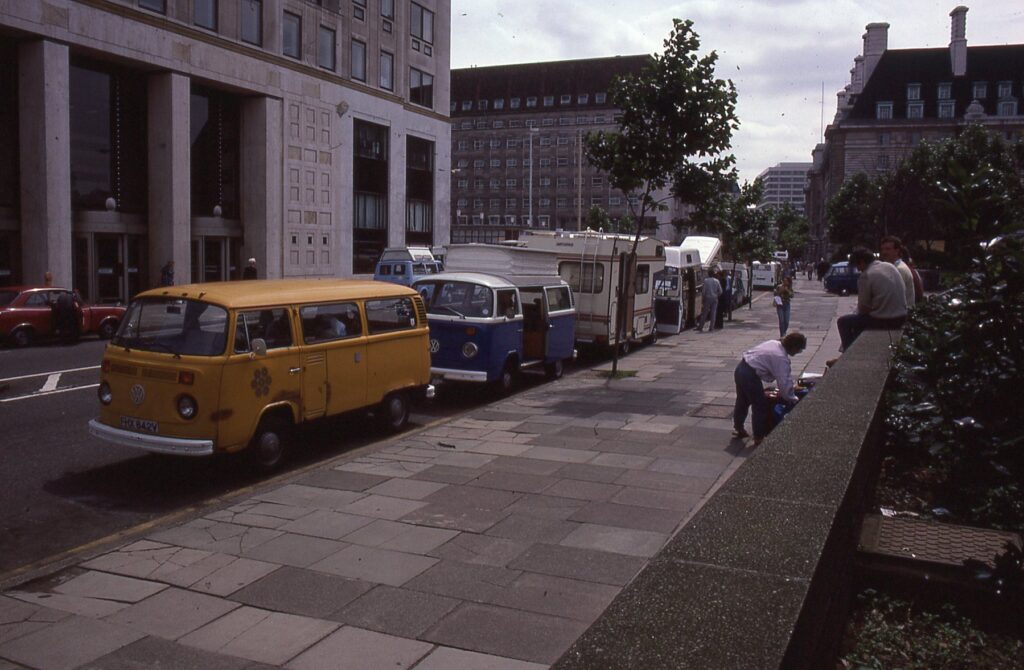
It’s hugely common to do that in Oz as well, and there are companies that will actually sell you a vehicle and guarantee to buy it back off you, usually for about 60% of what you paid if you don’t want the hassle of selling it yourself. Simple, fair and actually pretty easy – when you have a relatively inexpensive vehicle. If you move up to a higher end, fully equipped, late model, custom modified, 4×4 camper, you are looking at a very substantial up front investment and thus a commensurately substantial potential loss on sale. Drop just 10% of the purchase price and you are easily looking at a $15-20,000 +loss, in addition to having substantial capital tied up in your Aussie vehicle while you likely have your own vehicle at home depreciating away. And that probable loss assumes you can find a buyer who wants exactly your kind of rig, lives in the city you are trying to sell it in, has the $$ to buy it ( or can finance it ) and wants it right when you plan to sell it. That’s a LOT of stars to align for this to be an effective solution. Get the currency trade wrong and you could easily lose another $10,000 + just on that ( but you might win, too ). Of course you would also need to start thinking about selling it long before you finish travelling with it. Suddenly “buying and selling” ( especially with a higher-end vehicle ) is not as easy or cost effective as you might think. The “Returning to Canada, must sell quick” pitch is not likely to get you top dollar, either ! We thus eliminated the “buying and selling” option almost as quick as the “renting” option.
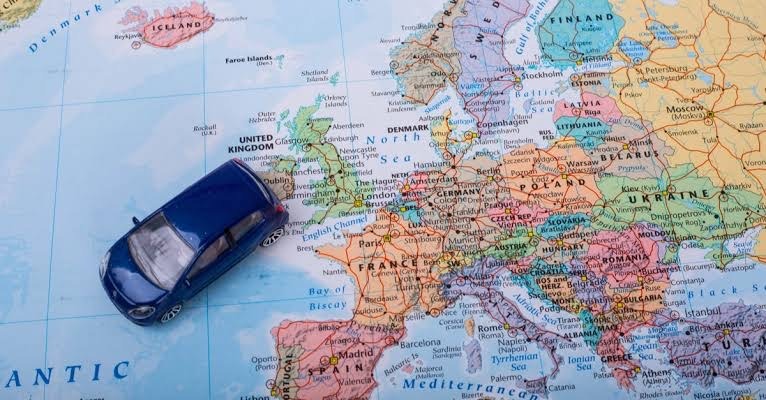
Further Considerations
Beyond the above analysis, there were several other very relevant reasons why we opted to ship our own vehicle to Oz:
1) We had shipped a vehicle internationally twice before ( Panama-Colombia and Argentina-USA ) and were thus very familiar with the process – this was not our first rodeo. It is not something everyone is comfortable with, and there are risks, but we knew we could live with them.
2) I had put almost a year and a half of blood, sweat and tears into building our rig and was not about to leave it sitting in Canada and then rent/buy another one – quite honestly, it was NEVER going to happen, regardless of how the economic analysis shook out ! It just seemed like the most totally pointless thing to do. For many others this will factor into the analysis as well.
3) Most importantly though, it’s not our plan to just ship it to Australia and ship it right back when we are done. While Covid has taught us all to be flexible in our plans, one can ( and should, I think ) still make plans at least – just be prepared that they may not work out ( been there, done that ! ). Our dream is to continue overlanding after Australia which means travelling through more countries with our van ( ideally via Asia or Africa ). With the world right now in a state of flux ( open warfare in places like Ukraine, Myanmar, and many others ) who knows what way we will take the vehicle back to Canada, but we certainly do hope to travel overland with our van well beyond Australia. Given that is the goal, it’s just totally impractical to either rent, or buy/sell, a 4×4 custom camper everywhere we might go……and that is why no one does.
PART TWO: Is This For Me ?
If you are in the overlanding Australia mindset and still with me, you’ve possibly now convinced yourself ( like we did ) that shipping your vehicle to Australia may be the way to go. Below are some pertinent details from our experience between December, 2022 and March, 2023 using a Wallenius Wilhelmsen Lines RoRo ship. We were advised that the cost was the same whether we embarked from Baltimore or Savannah ( we chose Savannah, it was warmer in winter ) and regardless of which East Coast Australian port we disembarked at ( we chose Melbourne simply because it was the first port of call ). Tacoma, Washington was much closer to us ( as a departure port ) but the freight quote was considerably higher and it involved transshipping in Panama ( hence the added risk of theft and damage as our vehicle was moved from one ship to another in Panama ). What we saved departing from Savannah covered the extra driving cost to get to Savannah ( vs Tacoma ) – and we got to see more of the US and Canada.
The Numbers – What It Cost
For those readers who may have wondered out loud, I hope the above analysis makes some meaning of our crazy lives and why we sometimes do the things we do. For those who wondered just what it did cost to ship a 42 cubic metre ( CBM ) vehicle from the East Coast of the USA to the East Coast of Australia, here is our breakdown, rounded off:
Savannah to Melbourne ( incl. port charges in Savannah plus sea freight ): $7300 USD
Shipping insurance : $850 USD
Quarantine /Ag fees in Australia: $390 AUD
Port fees/Inspections/Cleaning/Port transport fees in Melbourne: $1750 AUD
Using an AUD/USD average rate of $0.67 this comes to : $9,585 USD or $13,180 AUD
Other Costs/Matters To Consider
So, not cheap – but it actually does not stop there. One should realistically also add $500-$600+ USD or so for a Carnet ( which is required for Australia) . Exact cost depends on the country of issue and depends on where you are from. There are some costs for getting to the port of embarkation ( fuel/campgrounds/Ubers – we spent almost $800 USD just in fuel to get to Savannah from Kelowna ) and some further costs for waiting in the port of disembarkation when you do NOT have access to your van – hotels, Ubers and eating out certainly add up quickly. We were fortunate to mitigate these latter costs as we had family to stay with part of the time but still ran up a fearsome tally of expenses due to car rental costs, AirBnB’s, hotels and meals out. These latter costs are often not considered but really should be factored in to any equation of cost/benefit of shipping yourself vs other options.
Administrative Considerations
Planning to stay in Oz for a year or more ( which you likely would if contemplating spending this kind of money just getting your vehicle there ! ) ? Unless you are a Kiwi or Australian ( and most folks doing this are not ), you’ll need Long Stay Australian visas ( 600 Class ) which require an application fee, a 20 page on-line application and, in many cases ( such as Lois’s ) a full medical and chest X ray at a designated doctor in your country who charges a fee to do such tests ( it was over $600 Cdn for Lois all in – and she’s healthy ! ), so count on close to $500 USD per person unless you get lucky and can avoid the medical testing requirement. Mind you, one bears these costs no matter what vehicle option you choose. Chancing it with a standard 90 day tourist visa could backfire if the ABF do not extend it – a risk we chose not to take. Our Sprinter van has to ultimately be returned to Canada of course but as we do not plan to return it directly from Australia it’s tough for me to estimate/quote a round trip cost – something less than double the one way cost though is probably fair.
We found the ABF folks ( Australian Border Force ) super easy to deal with and dealt with them twice. Firstly, when Lois entered on her Long Stay visa – we were prepared for questions about proof of funds, how long she intended to stay etc etc, but she was never asked – not even a stamp in the passport these days ! It took just minutes; very slick.

Secondly, it was now my turn, as I had to present the vehicle Carnet to the ABF ( which is done just prior to the expected date of arrival of the ship – we had been in Australia for two weeks by this stage ) – it also could not have been easier. The vehicle is in my name so I asked about the extension process, in case one was to be required – no problem, it could be easily extended for another year. I asked what happened if I had to leave the country temporarily without the vehicle ? Also no problem, the Carnet is not linked to one’s passport, just park it securely, off the street and ensure no one drives it. The only requirement is that the vehicle leaves Australia before the Carnet expires. It was “stamped in” in less than 30 minutes and I was on my way. That legal approval to temporarily import the vehicle is then instantly communicated ( on line ) to the port people and quarantine folks so they know that when the cargo arrives (they still need to inspect it), it is legally approved for import. Key point (and this is true of most Australian ports of entry as I understand it ): the ABF folks that process the Carnet are NOT located at ( or even near ) the port. In Melbourne anyway, they are at ABF ( Customs ) House right beside Tullamarine airport. Plan accordingly. The fellow was super friendly, and no fee was charged. Emails and calls were promptly returned. At this point everything was just running soooooo smoothly.

If this all sounds too easy and you figured the hammer was yet to drop, you’d be right. As you can see above the Carnet was stamped on Feb 6 and on that day we expected the ship to unload Feb 7 ( which was already much later than it’s originally scheduled arrival date of January 28 ). Here I’ll cut a long story very short – it sat out in Bass Strait for over 3 more weeks, finally unloading in early March with the unloading date pushed back on at least 6 or 7 different occasions. The wait to get it off the ship and just onto the port was excruciating. The physical vehicle inspection process ( by Quarantine ) was also very stressful – no other way to put it. Our vehicle had been thoroughly cleaned ( and fumigated ) in Savannah but despite that we’d been warned ( many times in fact ) that it would almost certainly require additional washing on arrival. It did, so that held things up further as did the fact that the Quarantine folks insisted on us completing a Form B534 ( Statement of Unaccompanied Goods ). The ABF folks had not mentioned this when I delivered them the Carnet ( which in any case already states that the vehicle contains camping goods and other effects ) so it appears that when the vehicle details where uploaded by the ABF to the Quarantine folks, no mention was made of the fact that it was full of all our gear. Quarantine were thus surprised to find so much inside the van. It was then that they asked for the B534 ( which we completed and returned within the hour ), but as a result they wanted a FURTHER inspection of all said contents ( presumably to be able to match what we said was in it with what they actually found in it ). That second inspection took another 3 days to arrange. I’ll save detailing the really stressful next part in the process because in the end it all worked out ok – the vehicle was washed at the port, reinspected, and finally approved for release March 9 – the next day we had it in our possession. Key point, best to come prepared with the B534 whether you are asked for it or not and be prepared to list ( in detail ) all contents of your vehicle. It’s just the way it is. We’ve crossed probably 35 land borders with a camping vehicle full of stuff and made 2 major ocean crossings ( and many shorter international sea crossings ) and never been asked for such detail or any declaration in advance. Just save yourself the trouble and prepare it in case ! It’s important to get your vehicle cleared and off the port quickly because storage charges ( beyond the 3 or 4 free days ) are horrendous – do all you can to make this part move quickly !
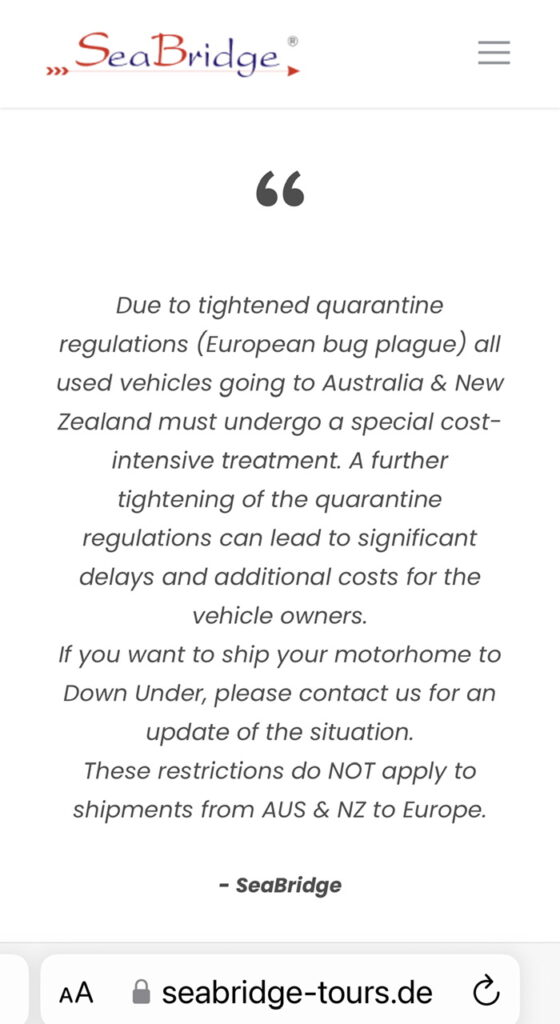

Insurance
While no one asked for proof of it at any point during the temporary importation of our van, Australian law ( like most countries ) requires that a vehicle have minimum 3rd party liability insurance. I can’t imagine anyone even thinking of driving without it. That is fairly easy to get in Australia ( Shannon’s Insurance were willing to do it for us ) but getting Comprehensive insurance for a foreign vehicle temporarily imported to Australia was MUCH more challenging. Most places we called ( and we called lots ! ) denied it to us since our vehicle either was not registered in an Australian state, or the exact model of our van could not be found on the Australian vehicle database. No match ? No deal ! The very same Sprinter that comes out of the German factory in Duesseldorf is classified by wheelbase in North America ( 144/170 ) but differently everywhere else in the world ( 416, 516 etc ). Ultimately we insured ours with a boutique insurer – KT Insurance – they were excellent to deal with. About 40% more than I pay in Canada but I thought that was reasonable given my other options ( none ! ) and the fact that our situation is a bit, err, “unique” ! I was honestly expecting worse. If your vehicle is more “truck/utility-like” and a 4×4, “Club 4×4” will do it. Ours was too “RV- like”. NRMA in NSW may have done it so they are worth approaching if you come in through NSW ( Port Kembla ). At least they did not flat out decline us like many others.
For those overlanders seriously contemplating shipping to Australia, I’d be happy to share more details of our experience. Contact me through the website at 1endlessroad@gmail.com. We have learned a tremendous amount in this process and it would be a shame for all those learnings to go to waste. The quarantine side of the experience is BY FAR the most challenging part ( and probably the reason many people who overland other countries baulk at shipping to Australia )- do not underestimate how seriously the Quarantine folks take their mission, it is unlike anywhere else in the world with the possible exception of New Zealand. It’s not just me emphasizing that- shippers will ALL tell you that ( my own shipper did ), as will anyone who has done it and posts on various overlanding FB groups will bear it out. The recent finding of harmful Asian snails on a shipment of new Chinese cars has caused many more vehicles to be inspected, and this has caused the port unloading backlogs that we were caught up in, so part of our delay may have just been unfortunate timing. The process I have described above likely won’t change but at some point the serious backlogs they are facing now will clear up. Check with your shipper in advance of your proposed departure so you can better manage your delivery expectations – good luck !

Hope this helps answer some readers questions, and for those overlanders looking to do this I hope it helps in your considerations. As for the “Jeff/Lois, was it really all worth it ?” question, we are very confident that by the time we leave my amazing homeland, having explored it thoroughly, the answer will be a resounding “Yes !” – you can count on a full and detailed analysis of that when we get to that point. For now, we have a lot of country to explore.

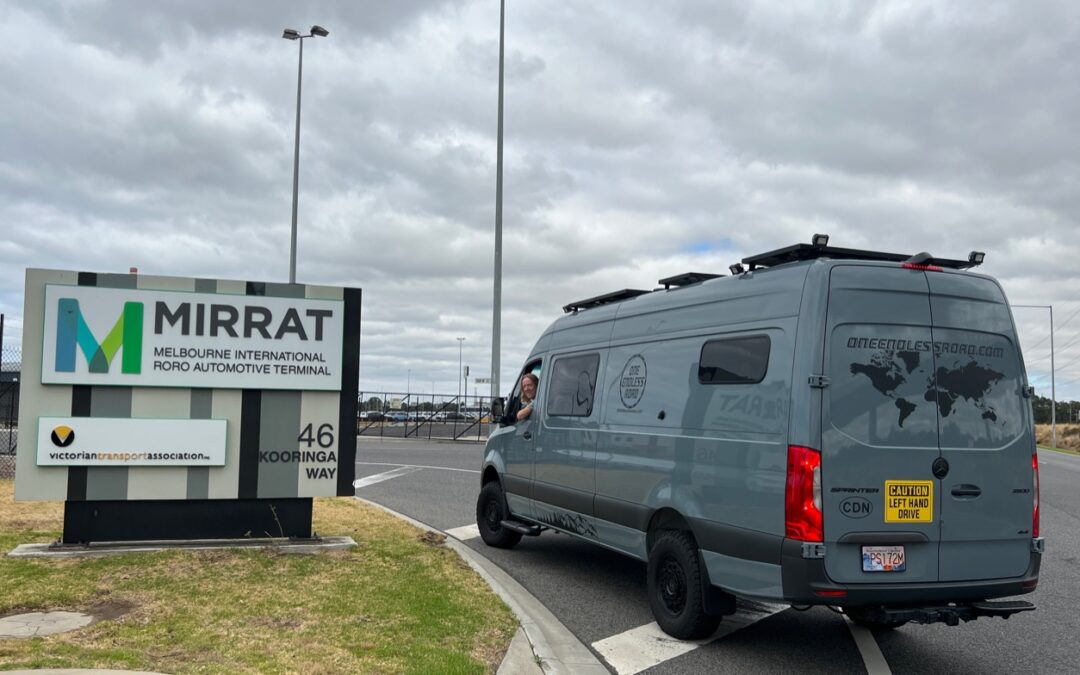

Whoa! Now that’s some complex stuff! A full time job in itself trying to figure all that out!
Yes, some complexity indeed ! Hoping for the compressor part next week, thanks again Chris !
Glad to hear you guys are finally underway, Jeff. Following closely as I would love to send my 144 4×4 to Europe for an extended period, I have family in northern Italy. Wondering if Europe would be a similar experience? (I’ve got the grey sprinter van, we met and chatted in Kelowna last summer.) Safe travels, have fun!
Hi Dale,
Nice to hear from you and so glad you found some value in the article. I do remember bumping into you and your wife – in the Revel, out front of Rona. Nice rig ! The good news for you is that Europe is a breeze. Barely more complicated than a BC ferry and you have weekly sailings Halifax to ( usually ) Hamburg. Multiple lines as well so you are spoilt for choice. If you look at the picture in the blog ( from the Sea-Bridge site ) it mentions no quarantine issue for vessels going into Europe. Our contact with Sea-Brisge was Uschi and she was awesome ! You can reach her at info@sea-bridge.de
Keep in touch and perhaps our paths will cross in Europe ( it’s in our plans ).
“What! No bumper sticker”
Very interesting details Jeff. Thanks for sharing. .
Hi Tom,
No, I don’t have one, but could make one up !!!!
Thanks for the detailed report. It all sounds reasonable though time consuming. Protecting their agriculture industry is paramount. The main deterrent to shipping Ro-ro would have to be theft. Your rig to travel to South America may have made things easier using a container. Not sure why you needed the van to tour Australia.
Just more space, and more features – but we do miss being able to “container” it from place to place 😊
Although we have never shipped a vehicle, we have done extensive driving in Canada and the USA. I find it interesting just reading about all the details that were required for your journey. I will follow with interest your journey through this land down under.
Wishing for you to have a wonderful time.
Thanks Abe !
Wow! That is a lot of info. re. Getting your wheels on the road. Nice to here that u r ON THE ROAD, again
Bert in Manitoba, Canada
Have fun.
Thanks Bert, it’s a big relief !
Jeff, Good to see you guys exploring the planet. Hope to see you again soon! All the best in your travels, and enjoy a good yourselves to the fullest extent.
Hi Trev !
Nice to hear from you ( say hi to the Remax gang for me ). It’s certainly gotten much easier to enjoy this now that we have wheels !
Picture of the yellow VW brings back memories of your visit to Oslo. Britt never forgets your astonishment when served pickled herring «Fish for breakfast?» Safe travel.
Lol ! Yes, the “fish for breakfast” notion was very new to us !!!! The Scandinavian love of Kalle’s Kaviar was another. But hey, everyone outside Oz and NZ thinks vegemite is ghastly, too !!!